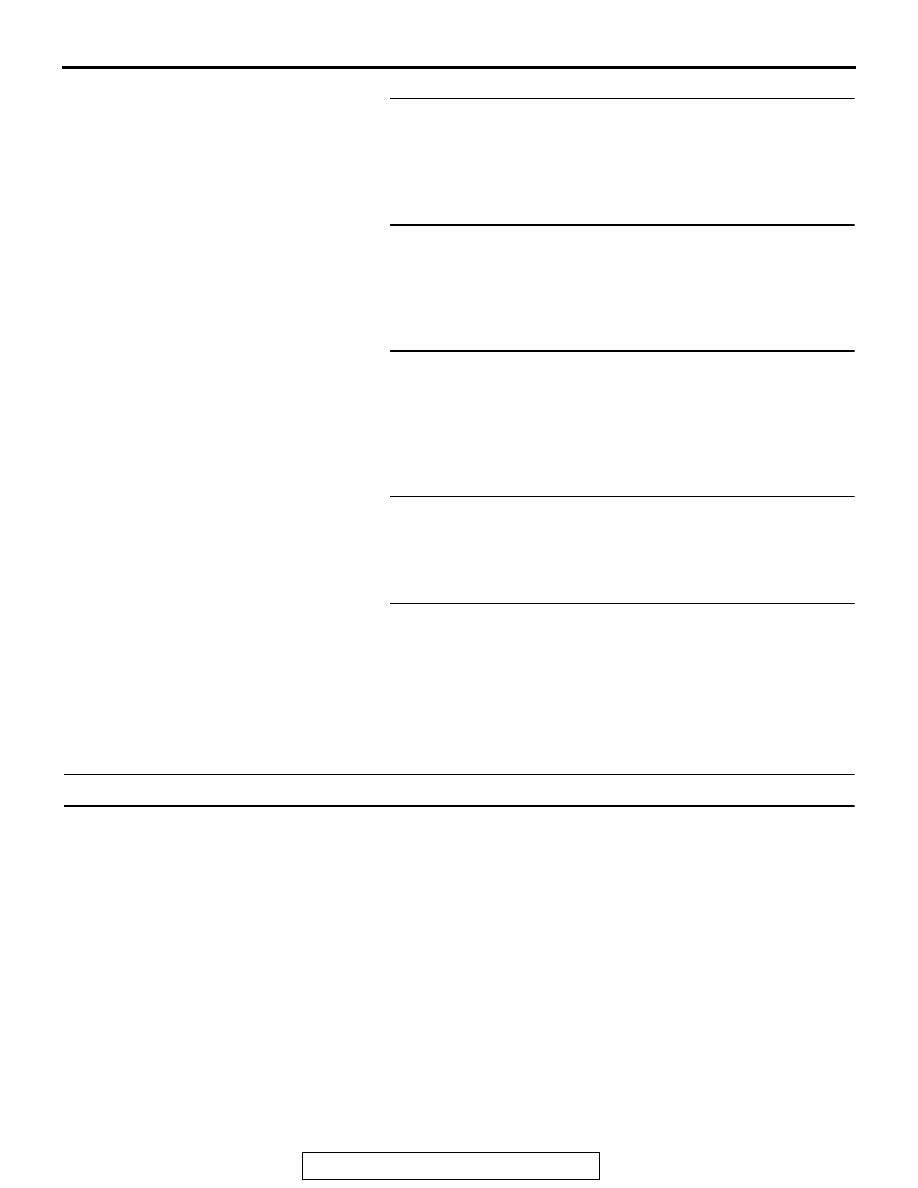Content .. 1709 1710 1711 1712 ..
Mitsubishi Outlander GS45X. Manual - part 1711

AUTOMATIC TRANSAXLE DIAGNOSIS <A/T>
TSB Revision
AUTOMATIC TRANSAXLE
23C-149
STEP 2. Check the installation of the transaxle control
cable, damping device, and sound isolation device.
Q: Is the check result normal?
YES : Go to Step 3.
NO : Repair the failure, and perform adjustment.
STEP 3. Check the abnormal sound.
Q: Does the abnormal sound change in accordance with
the vehicle speed?
YES : Go to Step 5.
NO : Go to Step 4.
STEP 4. Check the abnormal sound.
Q: Does the abnormal sound change in accordance with
the throttle valve opening? Or is it the transmission
fluid sound especially caused at start-up?
YES : Replace the torque converter.
NO : Go to Step 5.
STEP 5. Compare with another same model vehicle.
Q: Is there a difference from the same model vehicle?
YES : Go to Step 6.
NO : The procedure is complete.
STEP 6. Remove the transaxle assembly from the vehicle.
Disassemble and check the transaxle assembly to check if
there is a foreign material inside.
Q: Is the check result satisfactory?
YES : Replace the transaxle assembly.
NO : Replace the failure part.
INSPECTION PROCEDURE 13: Abnormal sound occurs during gear shift.
.
TROUBLESHOOTING HINTS (THE MOST
LIKELY CAUSES FOR THIS CONDITION:)
• Abnormal incoming route of sound: Installation of
transaxle control cable, damping device, sound
isolation device
• A/T failure: Driving force transmission system
(gear), hydraulic system (valve body assembly,
hydraulic circuit)
NOTE:
.
Inspection items for abnormal sound
1. Check of sound source and incoming route (radi-
ated sound, propagation sound, resonance, etc.),
and measurement at driver's seat, front passen-
ger's seat, and rear passenger's seat
2. Change of sound during cold and after warm up
(Change of fluid, and hydraulic pressure)
3. Change of sound with the throttle valve opening
(engine output change, hydraulic pressure
change)
4. Change of sound on a flat road, upslope, and
downslope
5. Check of tone